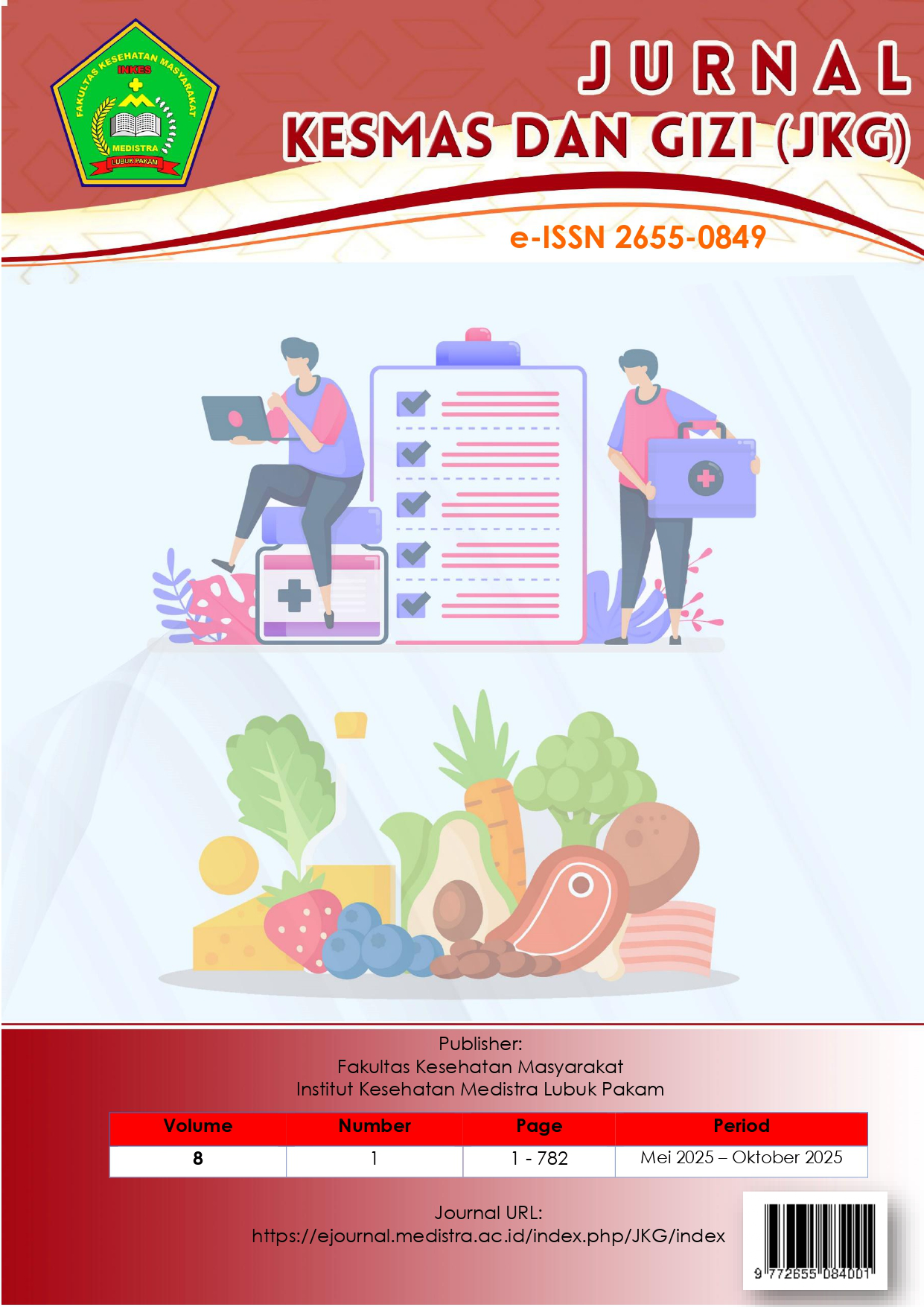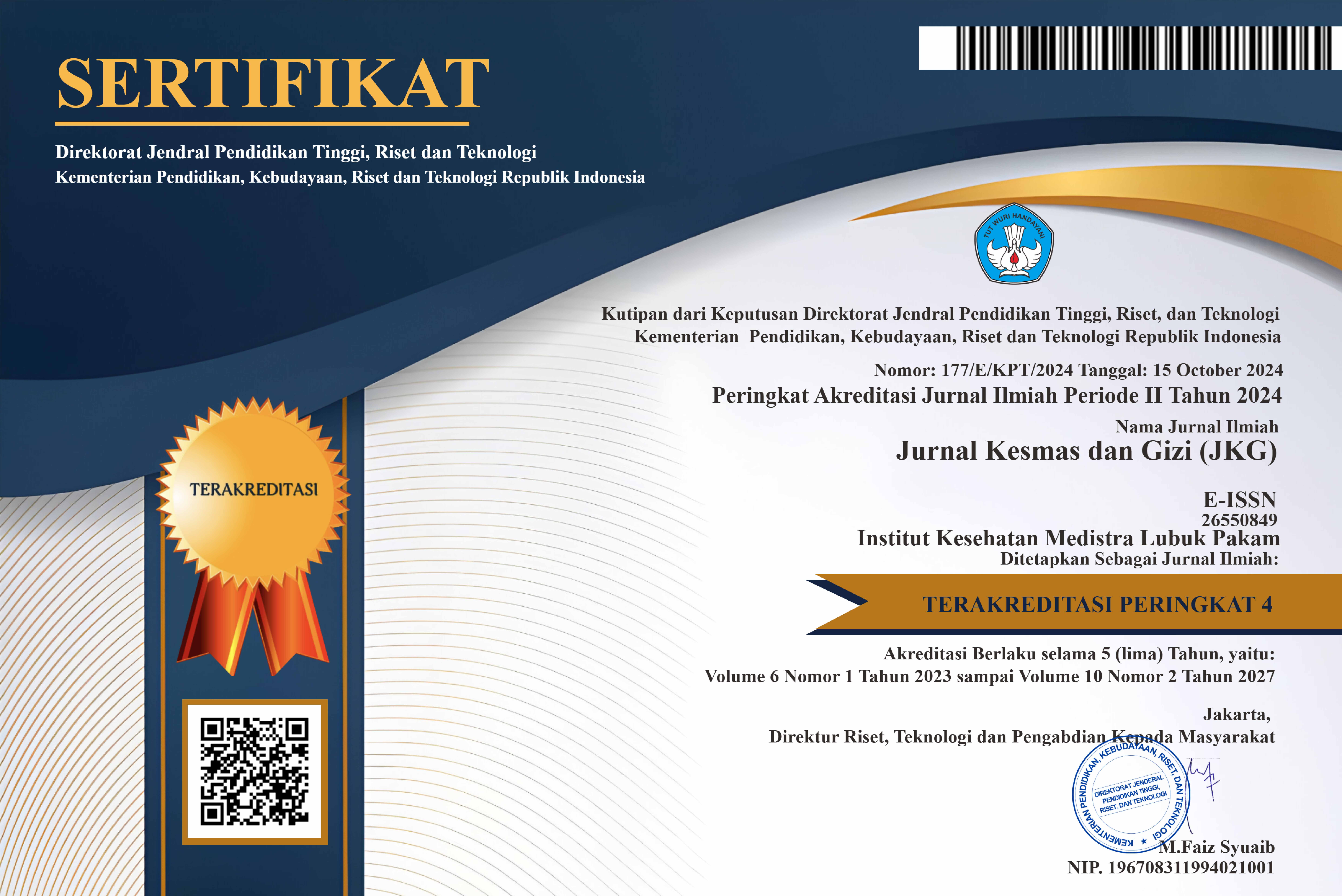Analysis of Success and Barriers to Implementing Health Service Management Information Systems in Indonesia: Case Studies and Recent Literature Review
DOI:
https://doi.org/10.35451/cyf8pg88Keywords:
Hospital Management Information System, health services, implementation, systematic literature, IndonesiaAbstract
Digital transformation in healthcare services in Indonesia has encouraged the use of Hospital Management Information Systems (SIMRS) as a crucial instrument for improving service quality, efficiency, and accountability. However, its implementation still faces various technical and non-technical obstacles. This study employed a systematic literature review approach by analyzing ten Google Scholar-indexed articles published between 2022 and 2025. Articles were selected using the keywords "SIMRS," "health management information system," and "health service implementation." Data were analyzed to identify the objectives, benefits, obstacles, and strategies for SIMRS implementation in Indonesia. The review results indicate that SIMRS can improve administrative efficiency, accelerate patient data access, strengthen inter-unit coordination, and improve the accuracy of pharmaceutical services. Determining factors for success include system quality, management support, and government regulations. Obstacles identified include limited infrastructure, low digital literacy among healthcare workers, resistance to change, budget constraints, and poor interoperability between systems. The combined analysis confirms that the success of SIMRS implementation is influenced not only by technological aspects, but also by human resource readiness, managerial support, and government policies. Key challenges recurrent in the literature highlight the need for a holistic approach to strengthening human resource capacity, equitable digital infrastructure, standardizing interoperability, and providing sustainable financing. The implementation of SIMRS in Indonesia has significant potential to improve the quality of healthcare services, but its success depends on an integrated strategy that integrates technology, human resources, management, and regulations. Key recommendations include strengthening digital literacy, investing in infrastructure, establishing national interoperability standards, and fostering multi-stakeholder collaboration to ensure effective, inclusive, and sustainable digitalization of healthcare services.
Downloads
References
[1] Natakusumah K, Maulina E, Muftiadi A, Purnomo M. Digital transformation of health quality services in the healthcare industry during disruption and society 5.0 era. Front Public Health. 2022;10:971486. Available from: https://www.frontiersin.org/articles/10.3389/fpubh.2022.971486/full. [diakses 25 September 2025].
[2] Xie Y, Gu D, Wang X, Yang X, Zhao W, Khakimova AK, Liu H. A smart healthcare knowledge service framework for hierarchical medical treatment system. Healthcare (Basel). 2022;10(1):32. Available from: https://www.mdpi.com/2227-9032/10/1/32 [diakses 25 September 2025].
[3] Bellei EA, Moretto CF, Lima JF, Fontana RM, et al. A survey on digital solutions for health services management: features and use cases from Brazilian national literature. Healthcare (Basel). 2025;13(18):2348. Available from: https://www.mdpi.com/2227-9032/13/18/2348 [diakses 22 September 2025].
[4] Ardiani N, Pratiwi D, Syahputra H, Rahmawati E. Understanding health information systems utilization across public health centers in Indonesia: cross-sectional study. JMIR Med Inform. 2025;13(1):e68613. Available from: https://medinform.jmir.org/2025/1/e68613 [diakses 15 September 2025].
[5] World Health Organization. Global strategy on digital health 2020–2025. Geneva: WHO; 2022. Available from: https://www.who.int/publications/i/item/9789240020924 [diakses 25 September 2025].
[6] Ayu NS, Hidayat MS, Lestari D. Success factors for implementing hospital management information systems: a systematic literature review. Health Care J. 2024;3(2):112–20. [Cited via Google Scholar]. [diakses 15 September 2025].
[7] Laila L, Sulistyawati, Hidayat MS. Evaluasi penerapan sistem informasi manajemen rumah sakit (SIMRS): studi literatur. J Promotif Preventif. 2024;9(1):45–53. Available from: https://journal.unpacti.ac.id/index.php/JPP/article/view/1424 [diakses 15 September 2025].
[8] IJRSS. Implementation of hospital management information systems for health services: RSUD dr. Iskak Tulungagung case. Int J Res Soc Sci. 2025;13(2):144–55. Available from: https://www.ijrss.org/index.php/ijrss/article/view/514 [diakses 15 September 2025].
[9] UHB Journal. Implementation of hospital management information system for optimizing healthcare service operations at A hospital. Visionary Management. 2024;12(3):225–34. Available from: https://ejournal.uhb.ac.id/index.php/VM/article/view/1329 [diakses 15 September 2025].
[10] Dinasti Journal. Analysis of the implementation of hospital management information systems (SIMRS) to improve the quality of pharmaceutical services. Dinasti Int J Digit Bus Manag. 2025;6(4):4670. Available from: https://dinastipub.org/DIJDBM/article/view/4670 [diakses 15 September 2025].
[11] JPHTR. Obstacles and challenges in implementing hospital management information system: a study of public and private hospitals in Padang City. J Public Health Technol Res. 2025;14(1):22–33. Available from: https://ejournal2.undip.ac.id/index.php/jphtr/article/view/28754 [diakses 20 September 2025].
[12] Goldzweig CL, Towfigh A, Maglione M, Shekelle PG. Impact of health information technology optimization on clinical quality performance in health centers: a national cross-sectional study. PLoS One. 2023;18(7):e0236019. Available from: https://journals.plos.org/plosone/article?id=10.1371/journal.pone.0236019 [diakses 20 September 2025].
[13] Journal of Hospital and Medical Services. Digital transformation in hospital services: evaluating effectiveness, challenges, and implications for healthcare service quality in Indonesia. J Hosp Med Serv. 2025;7(2):88–97. Available from: https://journal.univawalbros.ac.id/index.php/jham/article/view/615 [diakses 20 September 2025].
[14] Putri DN, Purba SH, Lubis K, et al. Tantangan dan solusi dalam implementasi SIMRS di rumah sakit pemerintah di Indonesia. Jurnal Riset Ilmu Komputer dan Aplikasi (JRIKUF). 2023 [Internet]. [cited 2025 Sep 25]. Available from: https://jurnal.stikeskesosi.ac.id/index.php/JRIKUF/article/view/480
[15] Sihole PO, Lesmana AE, Wasir R. Strategi dan evaluasi sistem informasi kesehatan di Indonesia: tinjauan literatur. Jurnal Kesehatan Terpadu. 2024 [Internet]. [cited 2025 Sep 25]. Available from: https://journal.universitaspahlawan.ac.id/index.php/jkt/article/download/28213/20722/101051
[16] Hasibuan ANR, Harahap JW, Agustina D, et al. Analisis strategi dalam optimalisasi pelayanan kesehatan melalui implementasi SIMRS. Jurnal Kesehatan Samodra Ilmu. 2024 [Internet]. [cited 2025 Sep 25]. Available from: https://jurnal.unismuhpalu.ac.id/index.php/JKS/article/view/5333
[17] Az-Zahra S, Sinuraya K, Sianipar PTF, et al. Pengaruh implementasi SIMRS terhadap peningkatan akses dan mutu pelayanan kesehatan di rumah sakit: systematic literature review. Jurnal Ilmu Kesehatan Aisyiyah. 2025 [Internet]. [cited 2025 Sep 25]. Available from: https://jurnalhost.com/index.php/jika/article/view/2658
[18] Darlis, Theo D, Nasution RS. Analysis of hospital organizations in the implementation of management information systems (SIMRS) at Dr. H. Yuliddin Away Tapaktuan Hospital. Promotor: Jurnal Mahasiswa Kesehatan Masyarakat. 2024 [Internet]. [cited 2025 Sep 25]. Available from: https://ejournal2.uika-bogor.ac.id/index.php/PROMOTOR/article/view/1025
[19] Maulana F, Halawa LJS. Review of SIMRS implementation in RSUD Dr. Pirngadi, Medan City. Journal of Health and Technology Research. 2022 [Internet]. [cited 2025 Sep 25]. Available from: https://jurnal.seaninstitute.or.id/index.php/health/article/view/100
Downloads
Published
Issue
Section
License
Copyright (c) 2025 Jul Asdar Putra Samura

This work is licensed under a Creative Commons Attribution 4.0 International License.
Copyright in each article is the property of the Author.


























